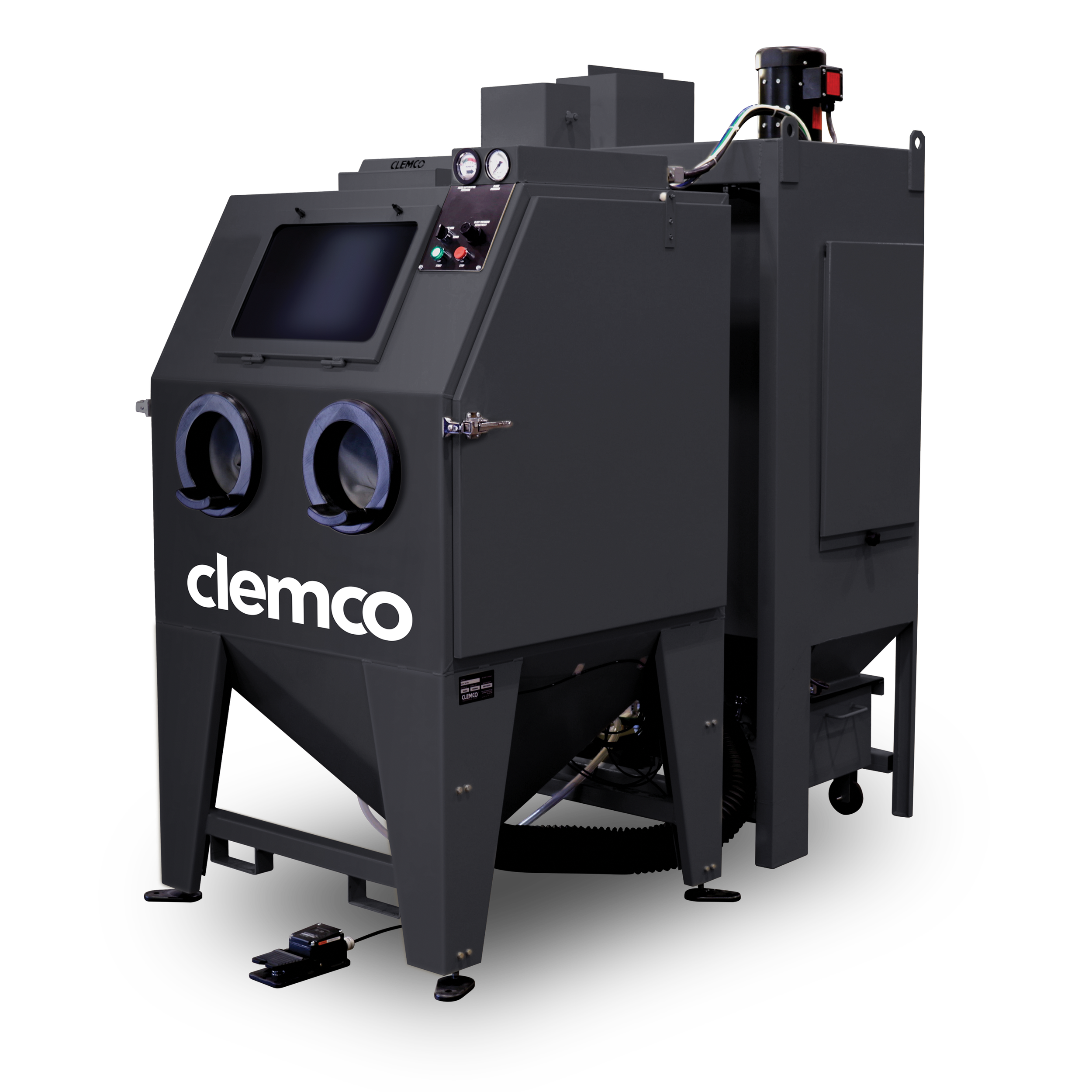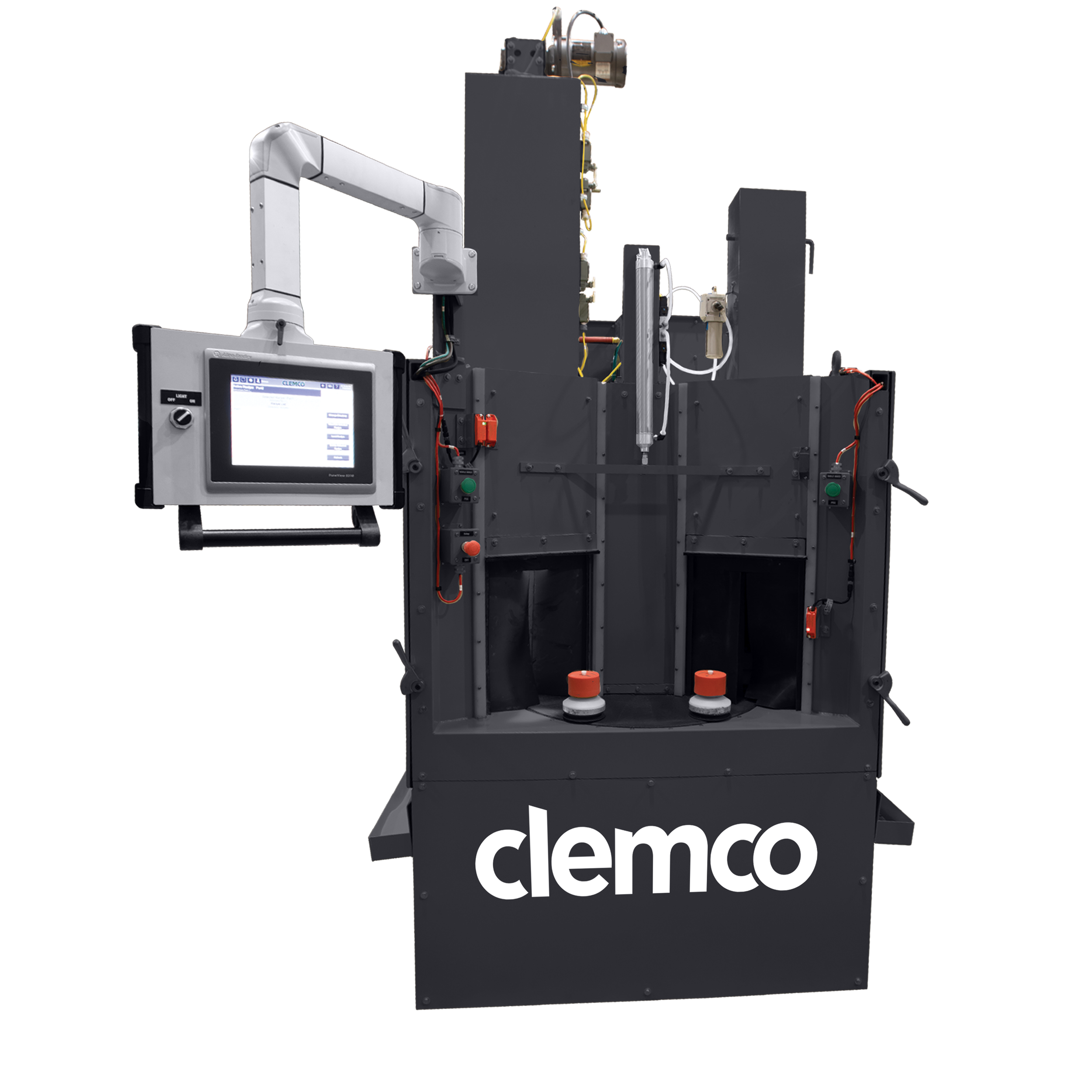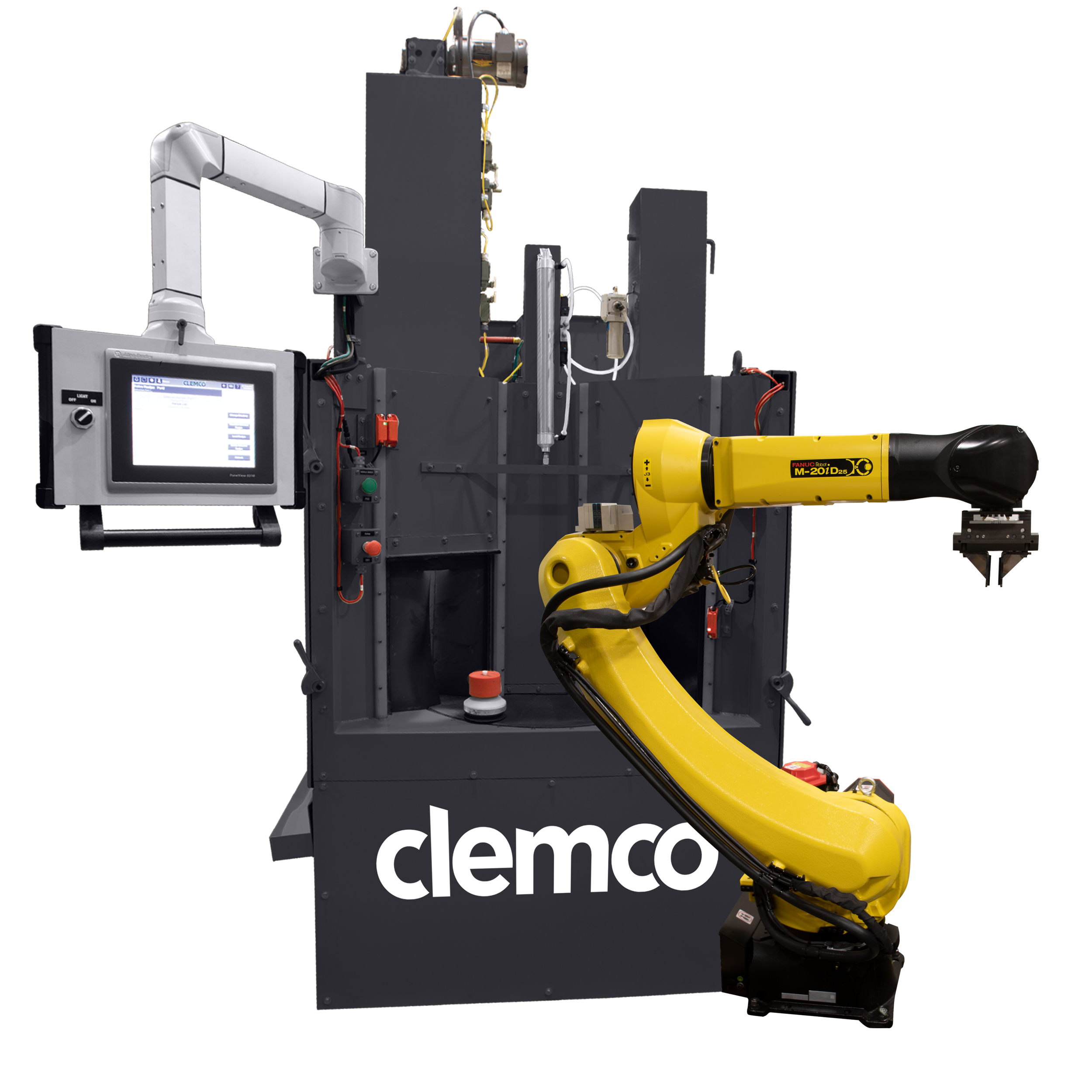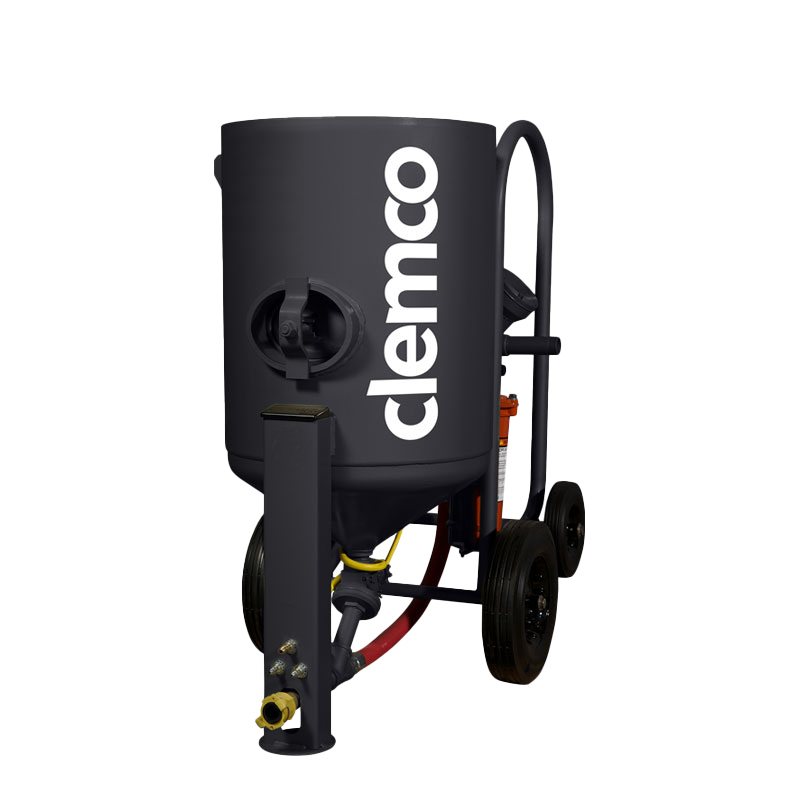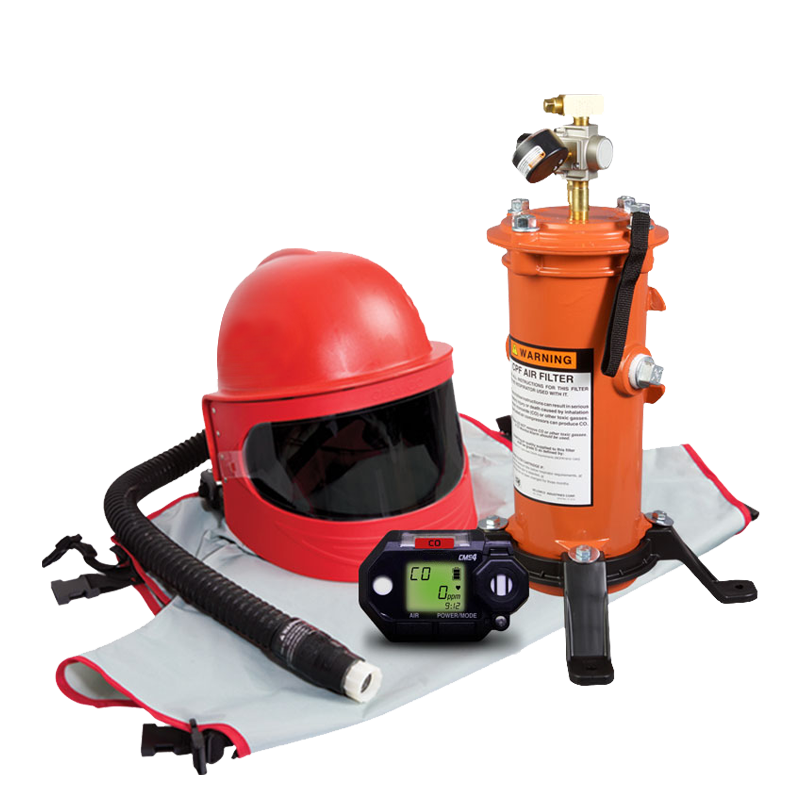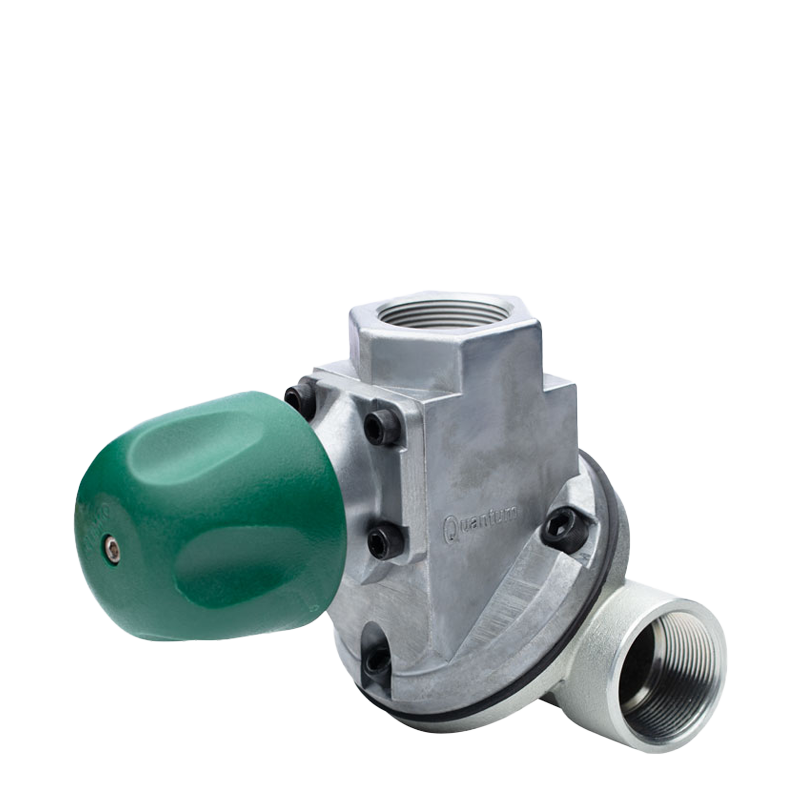
Featured Engineered to Order Medical Solutions
Medical-Grade Finishing for Replacement Surgeries
-
A leading U.S. manufacturer of implantable medical-grade body part replacements—such as hip joints, knee implants, spinal components, and prosthetic hardware—required a precision surface preparation solution to improve the biocompatibility, wear resistance, and coating adhesion of their components. These parts are made from materials like titanium, cobalt-chrome, and surgical stainless steel, and they must meet extremely tight tolerances and cleanliness standards to ensure long-term performance and patient safety. The blast system needed to provide micro-texturing without damaging delicate features, while also supporting high-mix, low-variation production cycles.
-
Clemco worked closely with the manufacturer’s cleanroom operations, R&D, and quality assurance teams to design a set of application-specific blast cabinets tailored to FDA-regulated medical device production. The design process included:
Identifying targeted surface finishes (e.g., Ra values) required for osseointegration, bonding, or passivation
Selecting fine abrasive media (such as glass bead, aluminum oxide, or alumina ceramic) with calibrated flow rates and particle sizes
Engineering low-pressure, high-precision blast nozzles to avoid altering geometries or damaging machined features
Designing easy-to-clean, stainless-lined enclosures suitable for sterile environments and cleanroom compatibility
Integrating ergonomic part holders and operator-controlled or programmable cycles to support both manual finesse and repeatability
-
Clemco delivered a suite of custom-engineered medical-grade blast cabinets, featuring:
Precision media delivery systems that achieve controlled surface roughness ideal for bone growth or coating adhesion
Polished stainless steel interiors with contamination-resistant seals and components for medical manufacturing compliance
Cleanroom-compatible dust collection and media reclaim systems to maintain sterility and minimize particle shedding
Programmable HMI or manual control interfaces depending on part complexity, with recipe storage for repeatability across SKUs
Full support documentation, training, and validation protocols to meet ISO 13485 and FDA QSR requirements
The result was a best-in-class surface preparation solution that enabled the manufacturer to deliver durable, high-performance medical implants, improve biological integration, and extend the functional lifespan of life-enhancing body part replacements.
Blasting Surgical Instruments
-
A top U.S. manufacturer of medical-grade surgical instruments needed a highly controlled blasting solution to ensure precision surface preparation of tools such as scalpels, forceps, retractors, clamps, and orthopedic devices. These instruments must meet strict surface finish, cleanliness, and durability standards to ensure they perform safely and reliably during surgical procedures. The blast process needed to create a uniform matte or satin finish to reduce glare under surgical lighting, enhance grip, and improve coating or passivation performance—all while maintaining sharp edges and tight tolerances.
-
Clemco partnered with the surgical instrument manufacturer’s engineering, quality control, and cleanroom operations teams to develop application-specific blast cabinets tailored for high-precision and contamination-sensitive environments. The design process included:
Selecting fine, inert blast media (such as glass bead or aluminum oxide) that delivers cosmetic and functional finishes without compromising material integrity
Engineering low-pressure, high-precision blast nozzles to protect sharp cutting edges and micro features
Designing ergonomic, operator-friendly enclosures that support high-volume throughput and consistent part orientation
Constructing cabinets with cleanroom-compatible stainless steel interiors, easy-clean surfaces, and minimized particulate shedding
Integrating manual and recipe-based controls for versatility across different instrument types and finishes
-
Clemco delivered a suite of specialized blast cabinets optimized for surgical instrument production, including:
Precision-controlled blasting systems that achieve low Ra finishes for enhanced sterilization and usability
Cleanroom-ready cabinet construction with stainless steel linings, sealed seams, and contamination-resistant components
Adjustable fixtures and soft-grip part holders to handle delicate, lightweight instruments without marring surfaces
Optional HMI-based programmable cycles for high-volume SKUs and manual finesse control for custom or complex instruments
Comprehensive training, documentation, and compliance support to meet ISO 13485, FDA QSR, and CE marking standards
The result was a surgical-grade surface preparation solution that helped the manufacturer produce instruments that support precise, safe, and successful operations—reinforcing clinician confidence and patient outcomes across hospitals and surgical centers nationwide.
Dental Equipment
Blasting
-
A leading U.S. manufacturer of medical-grade dental instruments needed a specialized blasting solution to support the production of tools such as dental scalers, curettes, mirrors, explorers, and surgical handpieces. These instruments require precisely controlled surface textures that are non-reflective, easy to sterilize, and enhance tactile feedback for dentists. The goal was to deliver consistent cosmetic and functional finishes that ensure dental professionals can perform safe, efficient, and successful procedures while maintaining instrument durability and hygiene.
-
Clemco collaborated with the manufacturer’s quality assurance, engineering, and cleanroom operations teams to develop a customized blast cabinet system that aligned with medical manufacturing standards and supported both high-volume and specialty tool production. The design process included:
Identifying optimal abrasive media and blast parameters to achieve satin or matte finishes that reduce glare and improve grip
Engineering low-pressure precision nozzle systems to protect fine features and delicate instrument tips
Constructing stainless steel-lined cabinets compatible with cleanroom environments and capable of withstanding sterilization demands
Incorporating adjustable fixturing systems to accommodate a wide range of instrument shapes and sizes
Designing the interface for operator control or recipe-based automation, depending on production batch type and complexity
-
Clemco delivered a fleet of high-precision blast cabinets purpose-built for dental instrument manufacturing, including:
Controlled blasting systems that deliver consistent, non-reflective surface textures ideal for clinical use
Cleanroom-compliant materials such as stainless steel interiors, sealed joints, and easy-clean surfaces
Custom part holding solutions that secure delicate instruments during blasting without damage
Optional HMI-based controls for storing validated process recipes, enhancing repeatability and traceability
Full training, validation documentation, and ongoing support to ensure compliance with FDA, ISO 13485, and CE requirements
The result was a tailored surface prep solution that empowered the dental instrument manufacturer to produce reliable, safe, and clinically optimized tools—enhancing both practitioner precision and patient care outcomes.
Proven Performance. Rugged Reliability.
Generations of excellence tGenerations of Excellence Transforming Our World, Worldwide since 1949 our world, worldwide since 1949
•
Generations of Excellence Transforming Our World, Worldwide since 1949
•
Generations of Excellence Transforming Our World, Worldwide since 1949
•
Generations of excellence tGenerations of Excellence Transforming Our World, Worldwide since 1949 our world, worldwide since 1949 • Generations of Excellence Transforming Our World, Worldwide since 1949 • Generations of Excellence Transforming Our World, Worldwide since 1949 •



